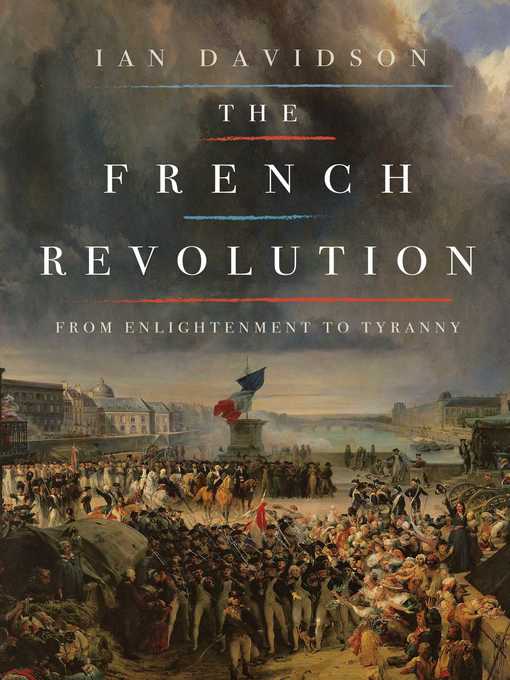
The French Revolution
کتاب های مرتبط
- اطلاعات
- نقد و بررسی
- دیدگاه کاربران
نقد و بررسی

October 31, 2016
Davidson (Voltaire: A Life), a former correspondent and columnist for the Financial Times, aims to correct modern misperceptions of the French Revolution that toppled the ancien régime in 1789 and ushered in the First Republic. The French Revolution was actually a series of revolutions that began peacefully, Davidson argues, after a group of educated young men set out to build a new state based on the rule of law rather than royal privilege. Within a few years, however, due to both social and economic factors, “the Revolution... entered a period of frenzy and fear, of public and private accusations, of secret denunciations and betrayals.” Though France’s new constitution contained lofty democratic ideals, the bourgeoisie and sansculottes turned on one another as a result of recurrent food shortages, ongoing wars and counterrevolutionary uprisings, and especially the rampant inflation caused when the fledgling government issued paper promissory notes called assignats. At the height of the Terror that gripped the country in 1793–1794, especially in Paris, 35,000–40,000 people died as a direct result of the revolution, most of them executed for intangible offenses. Maximilien Robespierre’s downfall ended the Terror and restored order, but Davidson persuasively argues that the aftershocks of this most turbulent era continue to reverberate into the 21st century. Maps & illus.

Starred review from October 1, 2016
What we dont know about the French Revolution could fill a book; Davidson (Voltaire: A Life, 2010, etc.) has done just thatin spades.In the 1780s, Louis XVI was running out of funds. His usual sources turned him down so he called the Estates General for the first time in nearly 200 years. The king allowed the Third Estate to have twice the delegates, as they represented more population. As such, those citizens finally found their voice and decried the separate meeting of the orders. Eventually, many clergy and some nobles joined them. No one notified the delegates that a meeting with the king was postponed, and this produced the Tennis Court Oath. As the king acceded to the Third Estate, the absolute monarchy simply fell over dead. The first three years of the revolution were reasonably peaceful, as most attempted to solve the eternal issues of bread and money. The dismissal of the cabinet led to anarchy, while the newly formed militia broke into the Bastille to retrieve arms. The National Assembly eliminated royal pensions, tax exemptions, and feudal privileges. With the end of class distinction, the ancient regime collapsed on Aug. 4, 1789. The assembly passed the Declaration of the Rights of Man, defined the nation as the source of sovereignty, overhauled local governments, instituted tax reform, and nationalized the church, with particularly devastating effect. The mob power unleashed by crowd hysteria over hunger and unemployment enabled the working class to assume power, leading to Robespierre and the reign of terror. Ultimately, the Revolution was a series of battles that continued until Napoleon took over. The revolutionaries had no plan or final destination; after 200 years, theyre still trying to get the Constitution right. Throughout the book, the author fills in the gaps in our knowledge about the revolution and its aftermath, and the helpful maps, graphics, and a timeline further illuminate the narrative. An invaluable history of the French Revolution and its repercussions through the years.
COPYRIGHT(2016) Kirkus Reviews, ALL RIGHTS RESERVED.

November 1, 2016
The French Revolution (1789-99 ) was undoubtedly a significant event that changed the country's path forever. Davidson (Voltaire; Voltaire in Exile) takes a new look at this complex episode, which affected different groups in several countries with varying results. Although influenced by the American Revolution (1775-83), the French uprising couldn't have had a more opposite outcome. The sheer number of those involved in the conflict meant that it was sometimes unclear who stood for what, at any given time. What did the revolutionaries want in the long run? What did they fear? Davidson does his best to explain the decade-long affair. Casual readers may find that keeping track of dozens of historical figures can be overwhelming. VERDICT Davidson does a fair job of describing this period, but it is easy to get lost in the details. Best suited for readers interested in a thorough overview of the French Revolution.--Rebecca Kluberdanz, New York P.L.
Copyright 2016 School Library Journal, LLC Used with permission.

























دیدگاه کاربران